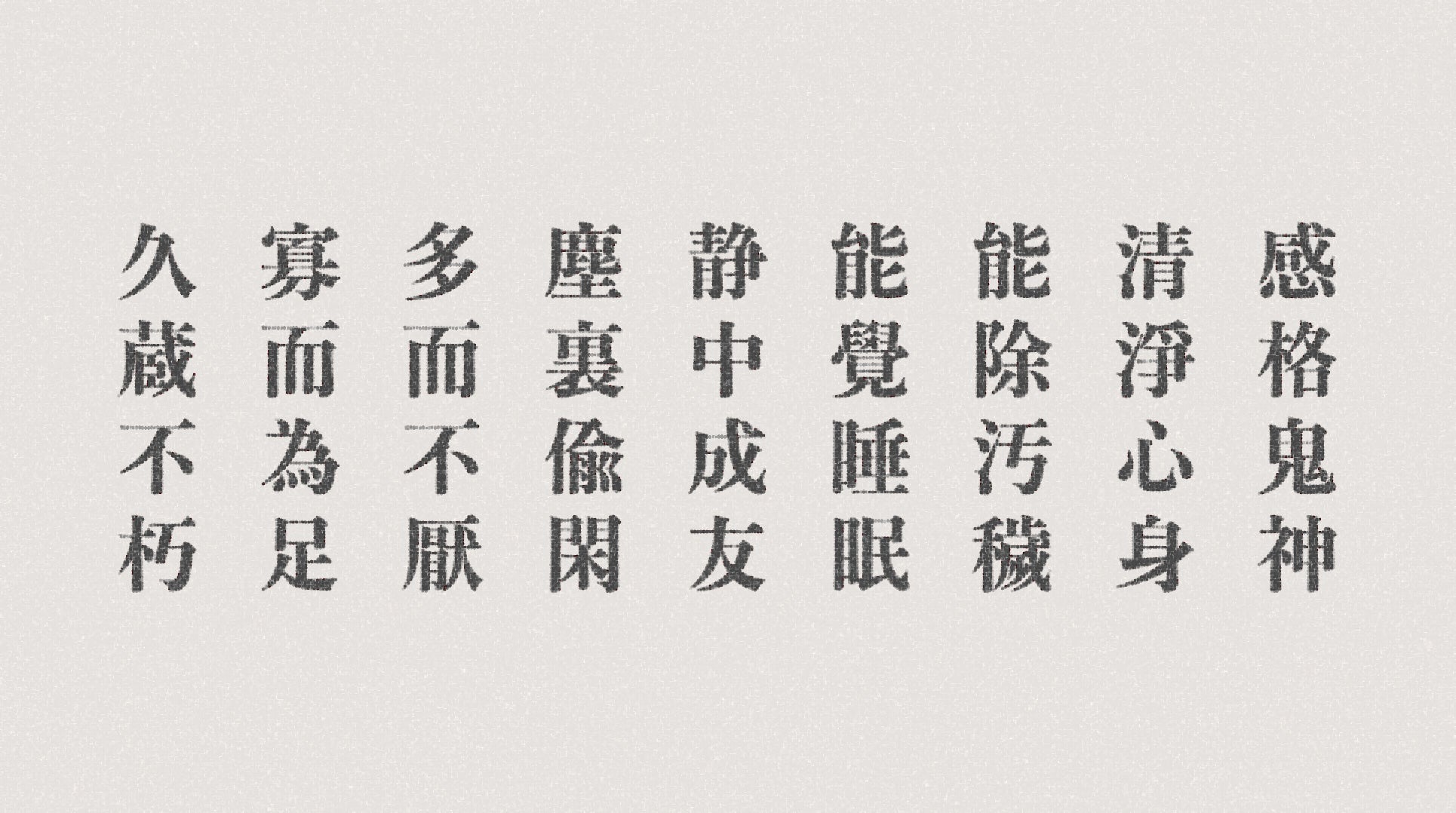Japan's Oldest Blend - MUKUSA NO TAKIMONO
Scents from the Heian period (794-1185), when The Tale of Genji was written. It is probably the oldest recorded "Japanese fragrance blends" that have been handed down to the present.
The term "TAKIMONO" means to smoke incense and let the smoke and fragrance of the incense soak into clothes, hair, and rooms. It also refers to "kneaded incense" itself, which is made by blending powdered incense materials (imported from overseas) and kneading them together with honey or plum pulp.
From the end of the Nara period (710-794) to the Heian period (794-1185), it was put to practical use in upper-class society to deodorize rooms, and became popular as "SORADAKIMONO.
For Heian aristocrats, the expression of their culture, wealth and sensitivity was to create their own original scents by fine-tuning incense materials based on a basic recipe. The representative works handed down to posterity from among these creations are called the "MUKUSA NO TAKIMONO (Six kinds of Scents)".
The six kinds of scents are "BAIKA", "KAYO", "JIJYU", "KIKKA", "RAKUYO" and "KUROBO". In "The Tale of Genji," four types of fragrance appear: plum blossom, chrysanthemum, chrysanthemum leaf, chrysanthemum leaf, and chrysanthemum leaf.
In "Gofushimiin Shinkan Takimono Ho", a book written at the end of the Kamakura period (1185-1333), which explains the origin of kodo and the flavor of incense, these fragrances are compared to the four seasons.
The recipes for these six kinds of fragrances can be found in incense biographies such as "Kaoru-shu-ryu-sho" from the late Heian period and "Mukusa-no-tane" from the early Muromachi period.
Even if the recipe is followed, the aroma of the fragrance will vary depending on the place of origin of the fragrant materials, the time of acquisition, and the subtle adjustments and procedures used in blending.
This is a unique feature of incense made in those days when natural materials were handled. Vegetables harvested from the same field by the same producer every year are also difficult to produce with a consistent taste due to the climate, water and soil conditions. Just as in cooking, the sensibility and imagination of the incense creator is required, and this is the profundity and depth of incense preparation.


